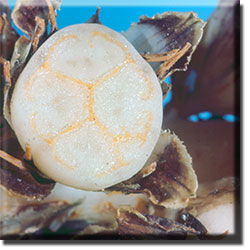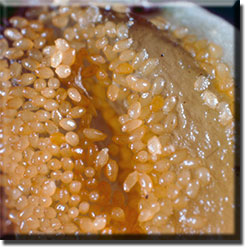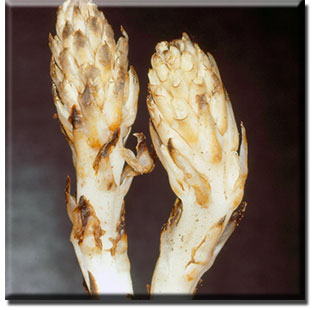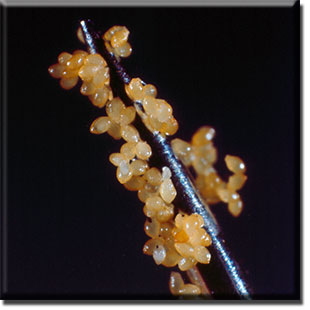
|
Pleuricospora fimbriolata
The common name for Pleuricospora fimbriolata is "Fringed Pinesap." But do such rare plants really have "common" names? Pleuricospora is the name by which this monotropoid is known. It occurs in conifer forests in the Sierra Nevada, and in the Coast ranges of northern California from Santa Cruz County northwards. It also occurs in Oregon and has been seen a few times in Washington. Pleuricospora can be found in summertime in deep conifer forests.
Like the other monotropoids, it is parasitic on fungi that live in the leaf litter beneath conifers. Descriptions of Pleuricospora say that the plant is yellowish. Perhaps ivory or cream color would be more accurate. It certainly is a non-green plant. The bracts (= leaves along a flowering stalk) turn dark brown at their tips very soon, perhaps as a natural result of drying. The flowers of Pleuricospora fimrbriolata are whitish. The sepals are fringed at their tips (one is seen at upper left). The name "fimbriolata" means "fringed" in Latin. The fruits developed by a plant of Pleuricospora are white and, at maturity, fleshy. Thus they are different from fruits of most of the monotropoids, which are dry and papery at maturity. Probably small mammals eat the fruits, which are close to the ground and thus not likely to be seen by birds.
A cross-section of a fruit of Pleuricospora fimbriolata. Most of the fruit is composed of fleshy tissue that is probably a food source for small animals. The distribution of seeds (they are yellow-brown in color) within the fruit is seen in this photograph. If one peels open the fruit of Pleuricospora, one can see that the seeds are very small (much enlarged in this photograph) and quite numerous. They may travel to another location inside an animal that eats the fruit, or on the outside of an animal. Where favorable localities for a plant are few and far between, seed size of that particular plant tends to be very small.   
This picture of seeds of Pleuricospora seeds shows how small they are, compared to the needle tip to which they are adhering. The fact that the seeds are sticky is also evident. A plant that has sticky seeds is at an advantage where dispersal is concerned, because can travel on animal hairs, not just inside an animal. |








